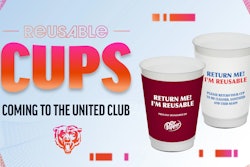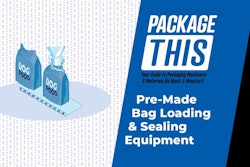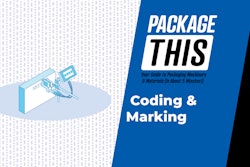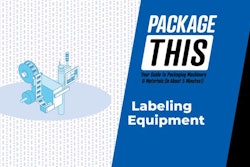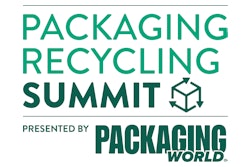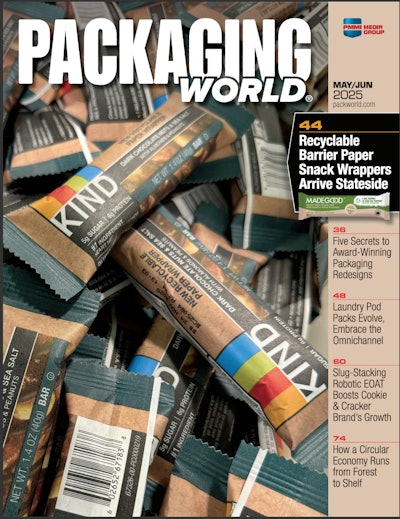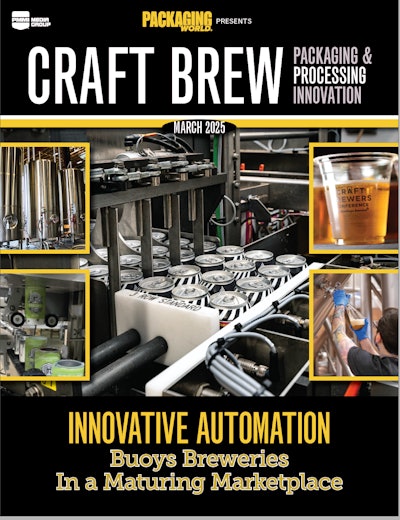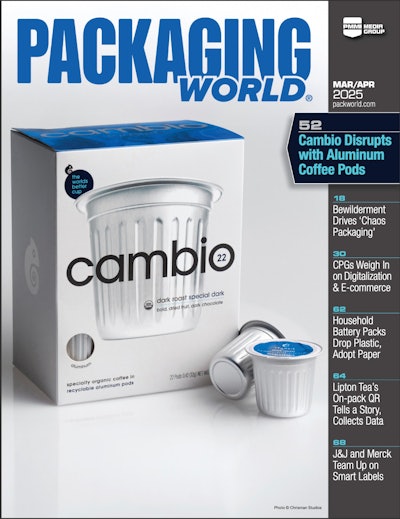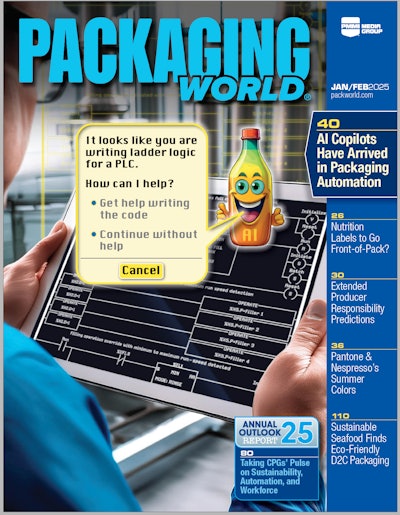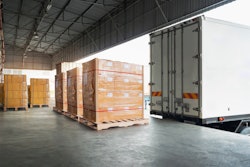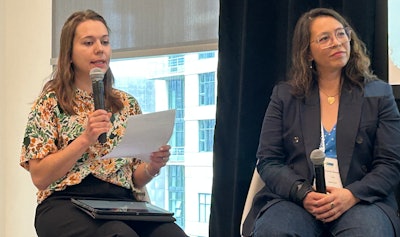
Reusable packaging is gaining traction as brands, policymakers, and infrastructure providers begin aligning on where and how it can scale. At SPC Impact 2025 in Seattle today, a panel of experts from Upstream, WWF, and Systemiq explored how the reuse movement is shifting from isolated pilots to more collaborative, standardized approaches that promise to transform how packaging is produced, distributed, and recirculated.
Moderated by Olga Kachook, director of the Sustainable Packaging Coalition at GreenBlue, the conversation examined the infrastructure, policy frameworks, and brand partnerships driving this evolution and what it will take to scale reuse successfully.
“Reuse is the most exciting system change challenge we have in front of us today,” said Julia Koskella, director of Packaging Innovation & Reuse at Systemiq. “And right now is a critical moment to be involved.”
A movement maturing beyond pilots
What began as a scattering of small-scale reuse pilots—often limited to boutique foodservice operations or refillable cup schemes—is now showing signs of real momentum and market maturity. According to Crystal Dreisbach, CEO of Upstream, the landscape is shifting as reusable packaging service providers move from scattered local efforts to regional infrastructure buildouts capable of servicing high-volume contracts.
“Reuse right now is largely a market-based solution to our single-use packaging crisis,” Dreisbach explained. “But we’re starting to move from boutique solutions that proved reuse is possible, into identifying beachhead markets and building out the infrastructure to scale.”
Upstream tracks more than 30 wash hubs already operating across the U.S., part of a growing service network that Dreisbach hopes will become “a widespread, shared, interoperable network of reuse infrastructure.” These facilities play a critical role in enabling brands and cities to process and recirculate reusable packaging at scale—a key requirement if reuse is to compete with today’s highly efficient disposable systems, according to Dreisbach.
“We have excellent trash infrastructure,” she said. “To compete with that, you need an entirely new supply chain with collection, washing, redistribution—all of it. That’s what’s beginning to emerge.”
Volume, she emphasized, is the lifeblood of successful reuse. “If you try to launch a reusable takeout container program with 30 restaurants, you’re not going to hit the economic thresholds needed to justify the infrastructure,” Dreisbach said. “But if you’re running a reuse system for a stadium or an event venue, that’s hundreds of thousands of dollars in recurring contracts. Now you’ve got the return rates and the volume to support a dedicated wash hub in that metro area.”
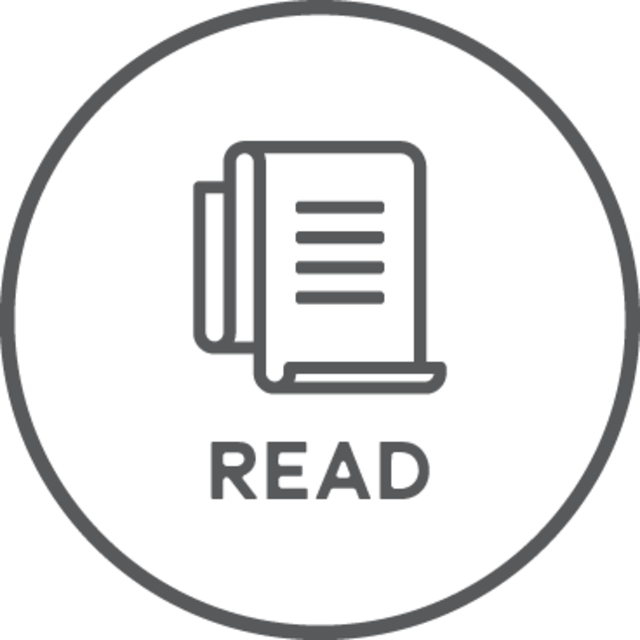 | Check out this list of new and noteworthy reusable packaging articles from Packaging World. |
But Dreisbach also stressed that reuse isn’t just a solution for food and beverage. Long before the current wave of reusable cup pilots and to-go container programs, B2B reuse systems were thriving in the background. “Think about the crates and pallets used to move goods across the country—that’s reuse,” she pointed out. “And they already have their own network of wash hubs.”
The challenge now is extending that same logic to consumer-facing packaging categories. And for that, policy will play a pivotal role. “EPR [Extended Producer Responsibility] laws are a game-changer,” Dreisbach said. “We’re going to start seeing producer fees kick in. And when disposable packaging becomes more expensive than reusable, because of those fees, we’ll finally start to see innovation unlock.”
Dreisbach encouraged brands to explore new guidance on how reuse fits into EPR frameworks. “If you’re a packaging company, look up the Upstream resource on best-in-class PROs [Producer Responsibility Organizations],” she said. “There are incentives, reduced fees, and exemptions for reusable packaging. It levels the playing field.”
Finally, she reminded the audience that reuse infrastructure can serve multiple sectors beyond food and beverage. “The wash facilities we’re building can be used for other product categories,” she said. “It’s shared and interoperable. Whether you’re a CPG brand or a foodservice provider, this infrastructure can work for you.”
Reuse policy gains teeth at the state level
As momentum around reusable packaging builds, state-level legislation is beginning to shift from aspirational goals to enforceable mandates. For Jessica Zeuner, senior program officer, Plastic & Material Science, at WWF, this marks a critical turning point in the viability of reuse systems across the U.S.
“Reuse is no longer just a nice-to-have, it’s being written into legislation,” Zeuner said. “And that’s what’s going to unlock funding, infrastructure, and scale.”
EPR bills have emerged as the primary policy tool for incentivizing reuse. Zeuner explained that EPR is the most direct mechanism for shifting financial and operational responsibility from consumers and municipalities to producers, especially when it comes to reuse infrastructure.
“In EPR bills, we look for a harmonized approach that ensures the responsibility for reuse falls on producers, not consumers,” she said. “Brands want this too. A consistent framework allows them to scale reuse strategies across markets without having to customize for every state.”
Five states have already enacted packaging EPR laws, and two more are on the cusp of doing so. Among those leading the charge is Minnesota, which she described as “a model EPR bill.” The state includes explicit reuse and return targets along with dedicated funding for reuse infrastructure.
Washington’s legislation—currently awaiting the governor’s signature—goes a step further. It mandates that PROs fund and implement a $5 million annual reuse assistance program. “Reuse targets in Washington will be set through a needs assessment,” Zeuner noted, “which is different from California’s SB 54, where specific reuse rates are hardcoded into the legislation.”
That difference is key, she said. “A needs assessment allows for ambitious but realistic targets that reflect market readiness and infrastructure capacity. It’s a flexible but firm approach.”
Even in states where reuse targets aren’t yet formalized, Zeuner emphasized that the incentives are already baked in. “All EPR bills include some form of incentive for reuse, either through reduced fees, exemptions, or access to infrastructure funding,” she explained. “Reuse is not a side note in these policies. It’s central.”
The implications for brand owners and packaging suppliers are significant. “If you haven’t started thinking about how reuse fits into your packaging strategy, you’re going to be playing catch-up,” Zeuner warned. “This is happening now.”
And it’s not just a U.S. trend. Zeuner reminded the audience that reuse is also being addressed at the global level through the United Nations Global Treaty on plastics, which is expected to align international approaches to systems change, including reuse. Meanwhile, local municipalities are experimenting with bond structures and incentives to fund infrastructure, as seen in Los Angeles’ proposed “resilience bond” to support municipal reuse systems.
Whether through global treaties, statewide legislation, or city-level initiatives, reuse is moving out of the policy periphery and into the core of regulatory frameworks. “The bottom line is this,” Zeuner said. “Reuse is being legislated. It’s part of the toolkit. And it’s moving forward.”
Ottawa emerges as a testbed for harmonized reuse
One of the most closely watched reuse initiatives in North America is taking shape in Ottawa, where a multi-brand, multi-retailer pilot is aiming to prove that harmonized infrastructure can make reusable packaging a viable, scalable option for personal and home care categories.
Led by Systemiq in partnership with The Consumer Goods Forum, the Ottawa pilot brings together major retailers and brands—including Walmart, Loblaws, P&G, Unilever, and L’Oréal—to test a shared returnable packaging system. “We’ve worked with our brand and retailer partners to identify personal care and home care as the focus,” said Systemiq’s Koskella. “We’re talking about 60 SKUs—shampoos, conditioners, laundry detergent, body wash, and housecleaning products—20% of the shelf space for these categories will feature a reusable option.”
Crucially, every participating brand is using the same standardized metal bottle. “That’s a key driver of the economics,” Koskella explained. “All the packaging is interchangeable. You can drop off the empty bottle at any participating store and pick up a prefilled one. There’s no app required. No need to find a specialty return point. It’s designed to integrate seamlessly into shoppers’ existing habits.”
The choice to focus on return-to-store over refill-on-site was a deliberate one. “We’ve seen that refill dispensers can come with real challenges, including spillage, confusion, and inconsistency,” said Koskella. “So instead, we’re going for a system where you just bring back your empty, and it gets professionally washed, refilled, and placed back on the shelf.”
The pilot is also addressing a key barrier that has plagued past reuse efforts: fragmentation. “One of the biggest pain points is consumers encountering reuse systems that are isolated, confusing, or hard to find,” Koskella said. “We’ve set this up so that the experience is the same across all participating retailers. Whether you’re at Walmart or Loblaws, you’ll see the same bottles, the same signage, and have the same return experience.”
Even marketing has been standardized to ensure clarity without compromising brand identity. “The metal bottles provide a premium, consistent canvas,” she added. “But each brand can use wraps, labels, and stickers to differentiate their products.”
 Jessica Zeuner of WWF (l.) and Julia Koskella of Systemiq
Jessica Zeuner of WWF (l.) and Julia Koskella of Systemiq
The operational backend has also been carefully engineered for efficiency. Rather than retrofitting multiple production lines, the group is using shared co-packing facilities. “We’re shipping in bulk to a local filler that handles washing and refilling for all brands,” Koskella said. “That allows us to scale quickly while protecting proprietary formulations.”
The pilot’s strategic decisions of standardized packaging, shared infrastructure, and consistent consumer touchpoints were all shaped by learnings from previous reuse trials and Systemiq’s analysis for the Ellen MacArthur Foundation’s “Unlocking a Reuse Revolution: Scaling Returnable Packaging” report. That report found that harmonized systems are essential to unlocking the cost savings and environmental benefits of reuse. “In fragmented systems, even proven models like beverage reuse struggle to compete on cost,” said Koskella. “But when brands collaborate and streamline, we can see up to 20% savings compared to single use.”
In Ottawa, the goal is to create a template that others can replicate. “This isn’t just a pilot, it’s a systems test,” Koskella said. “And we’re open to more partners joining. The more alignment we have, the stronger the system becomes.”
Rethinking consumer behavior
For reusable packaging to scale, consumer behavior has to shift, but panelists at SPC Impact 2025 argued that it’s not as simple as asking people to “do better.” In fact, one of the biggest misconceptions around reuse is that consumer reluctance is the root problem. According to Upstream’sl Dreisbach, that narrative overlooks the more fundamental issue: design.
“Consumers buy what corporations sell them,” Dreisbach said. “Nobody asked for single-use. It just became the default. And now we assume people are resistant to reuse, when really, they’ve never been given a real choice.”
In other words, behavior change isn’t about getting people to adopt entirely new habits, it’s about changing the default systems around them. That’s the logic behind Upstream’s work at the Grand Canyon, where foodservice operations are being fully converted to reusable formats. “It’s not just reusable cups over here and plastic-wrapped sandwiches over there. It’s everything” Dreisbach explained. “If that’s what consumers are offered, that’s what they’ll use.”
 | Read this related article, “Starbucks Leads Citywide Reusable Cup Trial” |
That same philosophy is shaping the Ottawa reuse pilot as well. Koskella emphasized that making reuse familiar and seamless is essential. “We looked at past pilots, and one of the biggest barriers was confusion,” she said. “You’d have one or two reusable SKUs buried in a shelf, and consumers had to figure out a new system, then never saw it again at the next store. That doesn’t work.”
The Ottawa trial flips that model by aiming for saturation. “We’re launching with over 60 SKUs—around 20% of shelf space in personal and home care—using standardized packaging,” said Koskella. “Consumers will see the same returnable bottles in multiple retailers, and they can drop them off at any of those stores. No apps, no special bins, no fine print.”
Systemiq’s research, including on the reuse report, found that interoperability and consistency are key to making reuse systems intuitive. “When reuse is fragmented, it’s confusing and costly,” Koskella said. “But when it’s harmonized, people don’t have to think twice.”
Ultimately, the panelists argued that successful reuse systems won’t ask consumers to change first, they’ll offer a new default and make it feel easy, familiar, and beneficial. As Dreisbach put it, “We need to stop thinking of reuse as a behavior challenge and start thinking of it as a systems design opportunity. When we build it right, the behavior will follow.”
A call to act now
As reuse infrastructure and policy frameworks begin to solidify, panelists urged CPGs, retailers, and packaging companies not to wait on the sidelines.
“If you’re a packaging company or a CPG brand, now is the time to get involved,” said Koskella. “Design these systems with your needs in mind. Don’t wait until they’re built without you.”
Koskella described the current moment as a pivotal inflection point. “Reuse is the most exciting system change challenge we have in front of us today,” she said. “I’d make a bet with anyone here that by 2040, these systems will be part of everyday life. But how they’re designed—who they serve, how they scale—will be decided in the next few years.”
She pointed to initiatives like The Consumer Goods Forum and the U.S. Plastics Pact as key convening platforms where companies can participate in pre-competitive collaboration. “These are the tables where decisions are being made about infrastructure, harmonization, and shared systems,” she said. “And if you’re not in the room, you risk being left behind.”
For WWF’s Jessica Zeuner, the urgency comes not just from the opportunity, but the responsibility. “Reuse is a critical component of our no plastic in nature strategy,” she said. “It has the potential to reduce plastic waste by up to 22% globally by 2040. That’s massive. But only if we act.”
Zeuner emphasized that reuse also has the potential to reduce greenhouse gas emissions associated with virgin plastic production and improve material recovery rates. “This is a chance for the packaging industry to lead, not just in innovation, but in environmental impact,” she said.
Dreisbach challenged the notion that reuse is simply an environmentalist’s mission. “This isn’t just about straws in turtles’ noses,” she said. “Reuse is about full economic transformation. It turns packaging from a cost center into an asset. It creates jobs, builds local supply chains, and strengthens communities.”
She also pointed to the potential for reuse to support a just transition. “The people hurt most by single-use systems can now be part of something participatory and empowering,” she said. “And when you create systems that touch human lives at multiple points, you also create joy and connection.”
Her parting vision was bold but grounded: a future where reuse is as normalized and as invisible as today’s waste system. “We push recycling to the curb. We push trash to the curb. Why aren’t we rolling reusables to the curb?” she asked. “That’s the vision. And if we build it together, it can become reality.” PW





